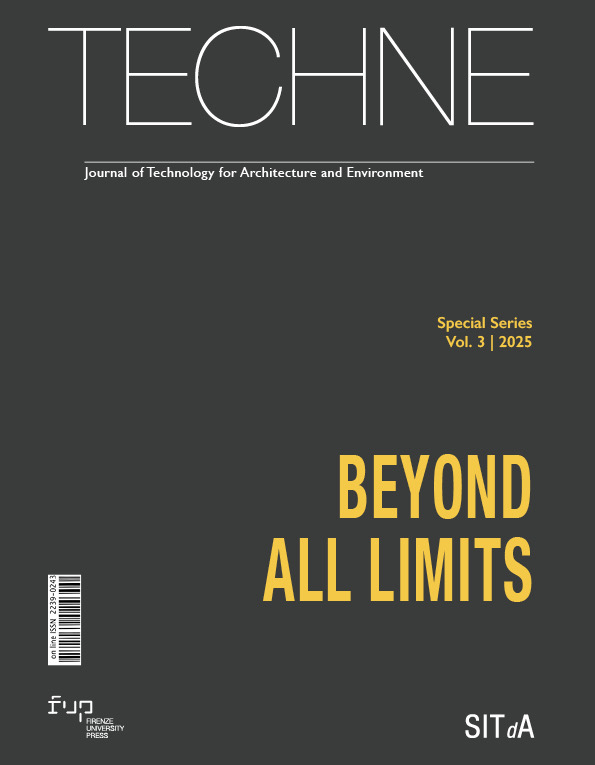Msheireb, Doha: the urban regeneration of a deteriorated Herat. Authentic contemporary and cultural localism
Published 2025-07-31
Keywords
- Urban Regeneration,
- Doha Qatar,
- Architecture and urban heritage,
- Cultural localism,
- Authenticity
- Cultural continuity in urbanism ...More
How to Cite
Copyright (c) 2025 Ali A. Alraouf

This work is licensed under a Creative Commons Attribution 4.0 International License.
Abstract
Doha, the capital of Qatar, used to be a port town on the eastern part of the peninsula of Qatar. Historically, the town shared cultural commonalities with other Gulf cities, particularly relying on fishing and pearl diving as the main feature of its economy. The old town, which was characterised by compact urbanism, extended families living in courtyard houses and shaded allies, was totally abandoned after the oil discovery and the flow of unprecedented financial resources in the late ‘70s and early ‘80s. This paper provides a critical narrative of the urban regeneration process that took place in the heart of Doha. It interrogates the new vision that was articulated to revitalise the old heart of the city and bring people back to such a valuable part of its urban fabric. The paper examines the Design Strategies used in the project to move from adaptive reuse to holistic urban regeneration. It analyses the use of oil and Gas revenues to help the city go beyond the western illusions and urban spectacle, and argues that the project is a manifestation of a needed transformation from the urbanity of an image to the urbanity of meaning. Such city transformation is essential for constructing a more dynamic and vibrant identity for the city.
Downloads
References
- Al-Buainain, F.A.R. (1999), Urbanisation in Qatar: A study of the residential and the commercial land development in doha city, 1970-1997, European Studies Research Institute, Department of Geography, University of Salford, Salford.
- Alexander, C. (1979, 2012)
- Alraouf, A. (2022), “From Spectacular to Speculative Gulf Cities: A Tale of Doha and Dubai in Chu”, in CL & He, S. (Eds.), The Speculative City: Emergent Forms and Norms of the Built Environment. Toronto: University of Toronto Press. DOI: https://doi.org/10.3138/9781487535759-006
- Alraouf, Ali A. (2021), “The Trilogy of Heritage, Public Art and Public Spaces: The Case of Fire Station Art and Cultural Development, Doha, Qatar”, in Azzali, S., Mazzetto, S. and Petruccioli, A. (Eds.), Urban Challenges in the Globalizing Middle-East: Social Value of Public Spaces, Springer, Heidelberg, pp. 87-105 DOI: https://doi.org/10.1007/978-3-030-69795-2_7
- Alraouf, Ali. (2019), “Less Is Beautiful: Transforming Metropolitan Doha into A Global Resilient Urban Village”, ISOCARP Review, vol. 15, pp. 106-131.
- Alraouf, Ali. (2018), Knowledge-Based Urban Development in the Middle East, IGI Global Publishing. PA, USA. DOI: https://doi.org/10.4018/978-1-5225-3734-2
- Alraouf, A. (2016), “Dohaization”: An Emerging Interface between Knowledge, Creativity, and Gulf Urbanity”, in Katodrytis, G. and Syed, S. (Eds.), Gulf Cities as Interfaces, Gulf Research Centre Cambridge, Cambridge, pp. 47-68.
- Alraouf, Ali. (2012), “A Tale of Two Souqs. In or Out of Place: The Paradox of Gulf Urban Diversity”, Open House International Journal, Vol. 37, Issue No. 2, June 2012, pp:72-81. DOI: https://doi.org/10.1108/OHI-02-2012-B0009
- Gharib, R. (2014), “Requalifying the Historic Centre of Doha: From Locality to Globalization”, Conservation and Management of Archeological Sites Journal, Vol.16 (issue 2), pp. 105-116. DOI: https://doi.org/10.1179/1350503314Z.00000000076
- Jaidah, I. and Bourennane, M. (2009), The History of Qatari Architecture From 1800 to 1950, Skira, Milano.
- Jodido, P. (2014), The New Architecture of Qatar (First ed.), Skira Rizzoli Publications, New York, United States.
- Kamrava, M. (2013), Qatar: Small state, big politics, Cornell University Press, Ithaca NY.
- Law, R. and Underwood, K. (2012), “Msheireb Heart of Doha: An Alternative Approach to Urbanism in the Gulf Region”, Design in Practice articles: International Journal of Islamic Architecture, pp. 131-147. DOI: https://doi.org/10.1386/ijia.1.1.131_1
- Melhuish, C., Degen, M., and Rose, G. (2016), ““The real modernity that is here”: understanding the role of digital visualisations in the production of a new urban imaginary at Msheireb Downtown, Doha” City and Society. DOI: https://doi.org/10.1111/ciso.12080
- Melhuish, C. (Ed.) (2014), “Heritage and renewal in Doha”, Urban Pamphleteer #4 (series editors Campkin, B.and Ross, R.), UCL Urban Laboratory, London.
- Nagy, S. (2000), “Dressing Up Downtown: urban development and government public image in Qatar”, City & Society, vol. 12, pp.125-147. DOI: https://doi.org/10.1525/city.2000.12.1.125
- Qatar 2030 Vision (2008), available at: http://www2.gsdp.gov.qa/www1_docs/QNV2030_English_v2.pdf.
- The Ministry of Municipality and Environment (2016), Qatar National Development Framework (QNDF).
- Roberts, David, B. (2015), Qatar: Securing the Global Ambitions of a City-state, C Hurst & Co Publishers Ltd, London.
- Sheikha Moza bint Nasser (2006) (chairperson Qatar Foundation), Msheireb Mission Statement, available at: https://www.youtube.com/watch?v=xeBeelno0iQ
- Wippel, S. (Ed.) (2014), Under Construction: Logics of Urbanism in the Gulf Region, Ashgate, London.






